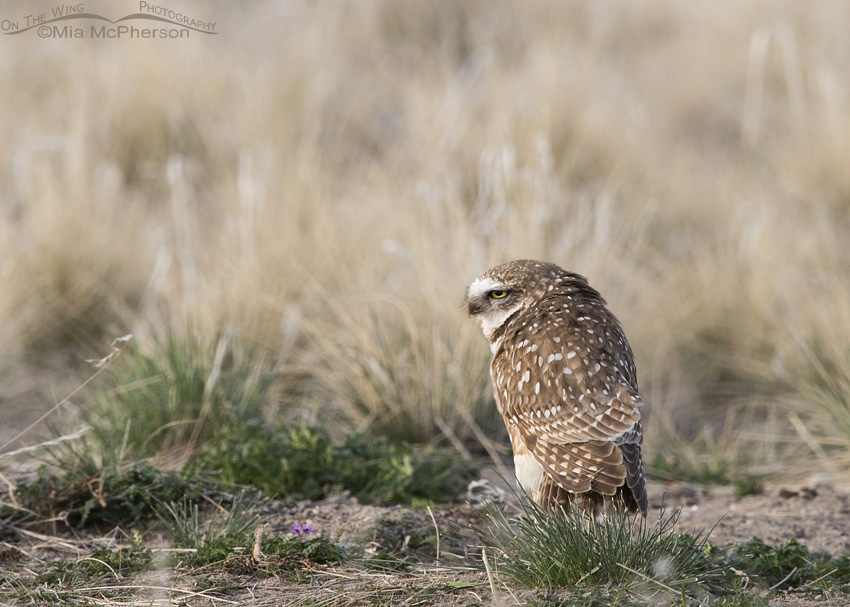 An adult Burrowing Owl in early spring – Nikon D810, f7.1, 1/640, ISO 640, +0.3 EV, Nikkor 500mm VR with 1.4x TC, natural light, not baited
An adult Burrowing Owl in early spring – Nikon D810, f7.1, 1/640, ISO 640, +0.3 EV, Nikkor 500mm VR with 1.4x TC, natural light, not baited
It won’t be long before spring migration and the birds that come to the Great Basin to breed will arrive in great numbers, among those spring migrants that I most look forward to seeing are the Western Burrowing Owls. They are small terrestrial owls with long legs, short tails and immense appeal for photographers, birdwatchers and nature lovers. They are active both during the day and night and quite often can be found standing outside of their burrows or perched on bushes near it.
In Utah Burrowing Owls are listed as a Wildlife Species of Concern and probably for a good obvious reason, habitat destruction. If public lands are removed from public hands this species may see even more of a decline in population than they are having now. Another reason to keep federal lands out of the hands of western states.
The adult Burrowing Owl in the image above was photographed in early spring on Antelope Island State Park. At the time I photographed this owl I believe it was looking for a mate or waiting for it mate from the previous year to arrive. A pair of Burrowing Owls did successfully rear young at this burrow last year.
Several times last year I saw people walk right up to this burrow because it is close to the road and their lack of nesting bird ethics bothered me. I didn’t photograph this burrow much after this image was taken because I felt the owls at this burrow were under a lot of pressure and I simply didn’t want to add to it. There were enough people already doing that.
I’m looking forward to seeing Burrowing Owls soon.
Life is good.
Mia
Click here to view more of my Burrowing Owl photos plus facts and information about this species.
Some of the owls in Utah and beyond have already begun to think of nesting or are nesting so I don’t feel it is too early to post this information on the ethics of being around or photographing nesting birds.
Ethics on photographing nesting birds:
- Do not approach too closely
- If the birds show any sign of distress, back away
- Don’t trim leaves, twigs or branches to get a clearer shot, you may inadvertently attract predators or cause the eggs/chicks to over heat
- Follow local, state and federal guidelines concerning nesting birds
- Don’t harass the birds to get an action shot
- Don’t stay a long time with nesting birds or chicks, that disrupts their normal behavior
- Always remember that your scent may draw predators to the area of nesting birds or birds with chicks.
- The safety and well being of the birds and their young is always more important than photographs.
For more information on the ethics of photographing nesting birds or chicks check out the Principles of Birding Ethics published by the American Birding Association.


Thanks for the reminders. Watching a nature PBS program recently I learned that a defense they have in the burrows is to emit a call that sounds like the rattle of a rattlesnake!
This is a different, unusual, interesting angle than ones we most often see of these wonderful little owls…I love them and worry about them…to lose them would be a terrible tragedy…loss of habitat and stupid people are such pathetic, avoidable reasons for their decline….
Thank you for continuing to educate and re-educate us bird loving folks!
Stunning series!
Beautiful photo Mia. Love these little owls. They are a treasure.